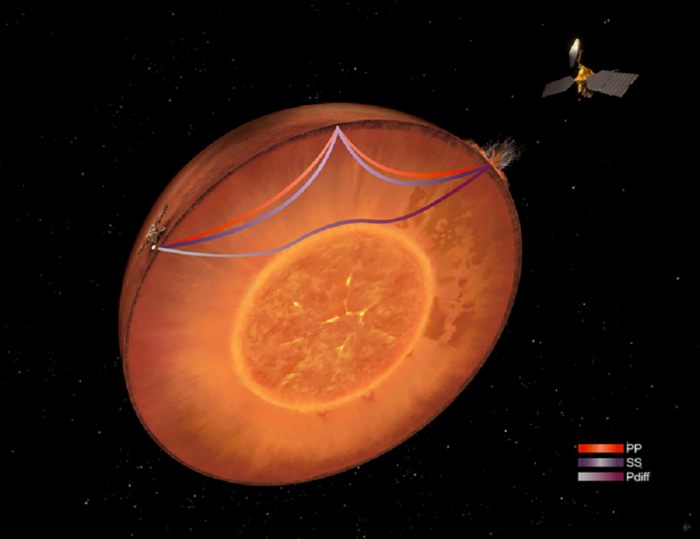Unpublished details of the crust of Mars emerge from the study of a great earthquake detected on the Red Planet last December 24 by the NASA lander Insight: it was caused by the fall of a meteorite, as shown by the impact crater identified in the same region by Mars Reconnaissance Orbiter (Mro).
The results of the study, useful for reconstructing the formation and evolution of the planet, are published in two articles in the journal Science.
The meteorite, which fell 3,500 kilometers away from Insight, generated a crater over 130 meters in diameter, just like a second meteorite that also fell at the end of 2021, just under 7,500 kilometers from the NASA lander.
Both events generated surface seismic waves - the first ever detected on a planet other than Earth - which were used to map the structure of the crust.
Artist's impression of the impact of a meteorite on Mars (source: IPGP -CNES - N. Starter)
"The speed of propagation of surface waves depends on their frequency, which in turn depends on the depth", explains Doyeon Kim, of the Federal Institute of Technology Zurich (Eth).
By measuring the variations in velocity on different frequencies, it was possible to deduce how the velocity changes at different depths: this provided the basis for estimating the average density of the rock, because the seismic velocity also depends on the properties elasticity of the material through which the waves propagate.
This data allowed us to determine the structure of the Martian crust between 5 and 30 kilometers deep.
The results indicate that the crust in the region between the point of impact and the probe is very dense and has a uniform structure,
The new data obtained by the NASA mission could help explain why the northern hemisphere of Mars is characterized by huge plains covered by lava flows, while the southern hemisphere has large plateaus marked by craters.
Simulation of seismic waves on Mars revealed details of the planet's crust (source: ETH Zurich / Doyeon Kim, Martin van Driel and Christian Boehm)
"As things stand, we still do not have a generally accepted explanation for this dichotomy, because we have never been able to see the deep structure of the planet, but now we are starting to discover it", says Domenico Giardini, professor of seismology and geodynamics of the Eth of Zurich.
The first results seem to disprove one of the most widespread theories: the crust of the northern hemisphere and that of the southern hemisphere do not seem to be composed of different materials, as has often been hypothesized, but their structure could be more similar than previously think at relevant depths.
New useful indications could soon arrive from the analysis of the surface seismic waves generated by the largest earthquake ever recorded on Mars, which occurred last May with magnitude 5. The data could allow to reconstruct the structure of the crust even more in depth, up to about 90 kilometers below the surface.
One last great achievement for Insight, which is expected to conclude its mission within the year due to the accumulation of dust that prevents the solar panels from functioning properly.

